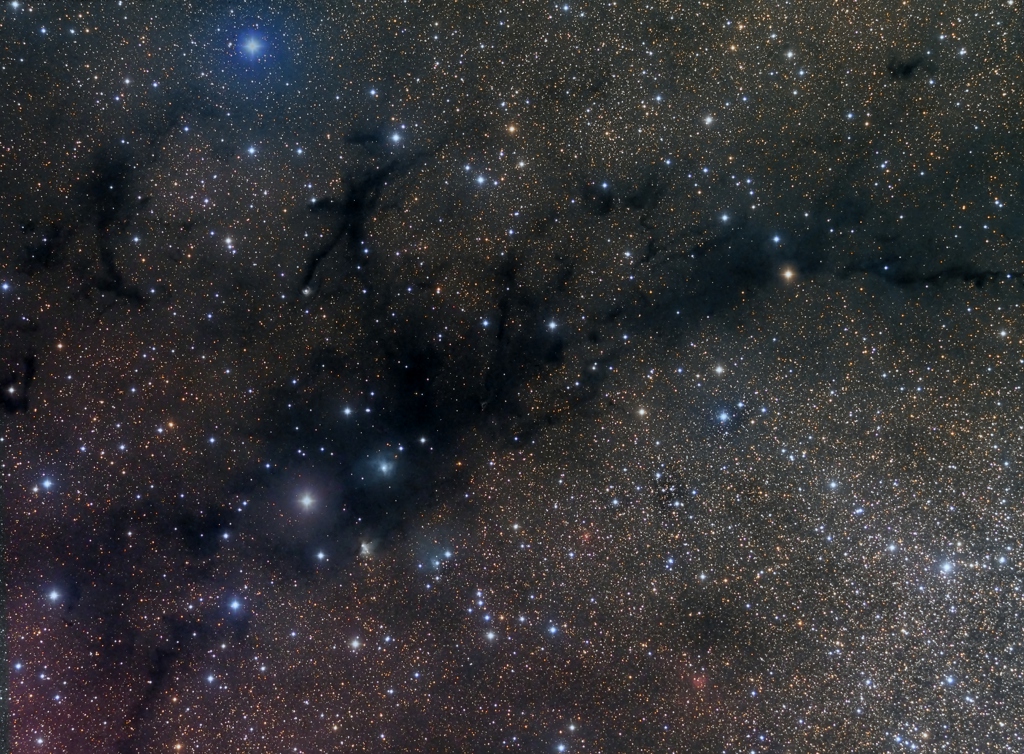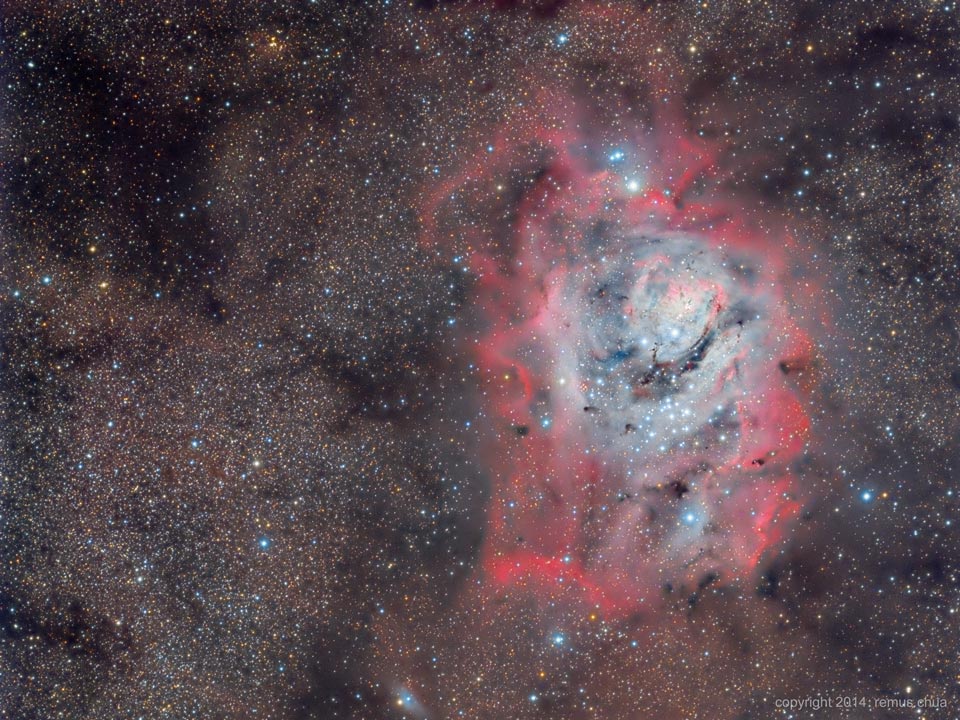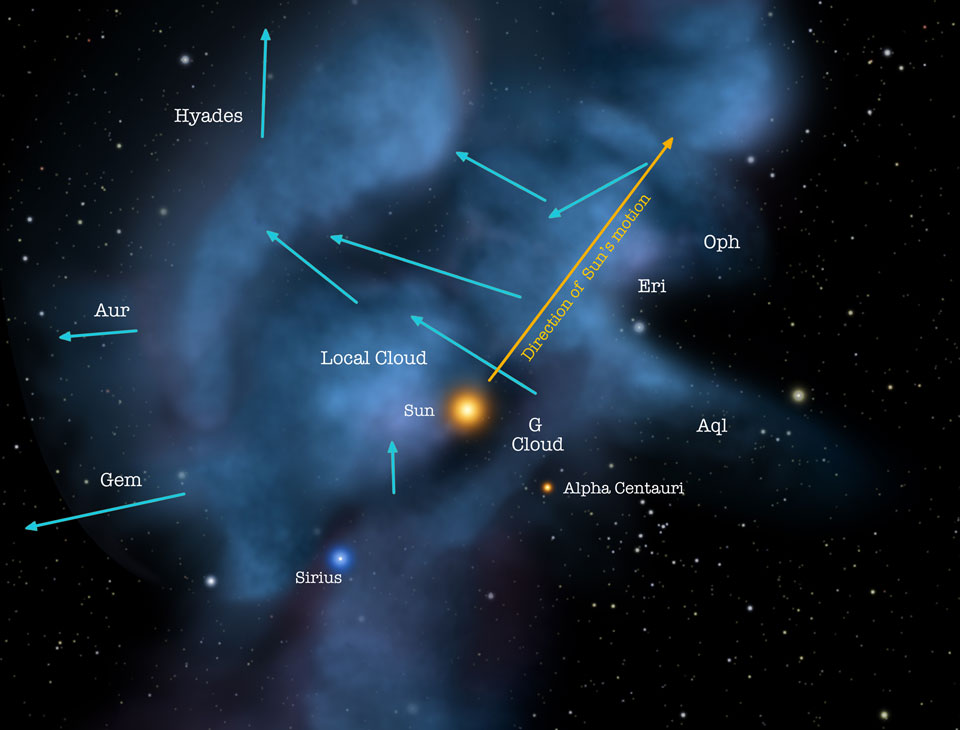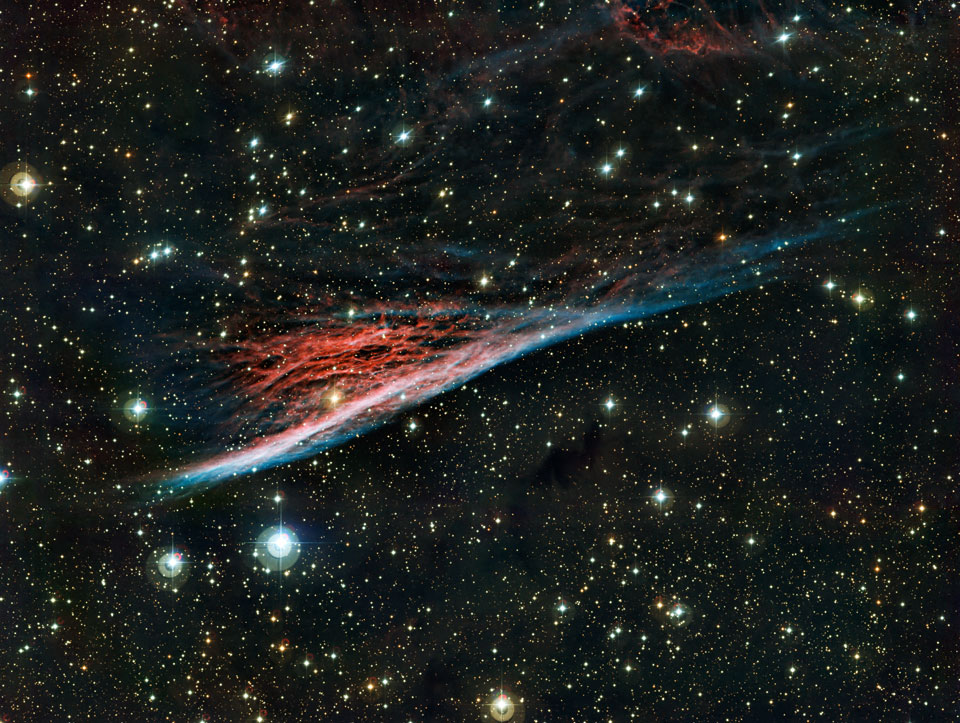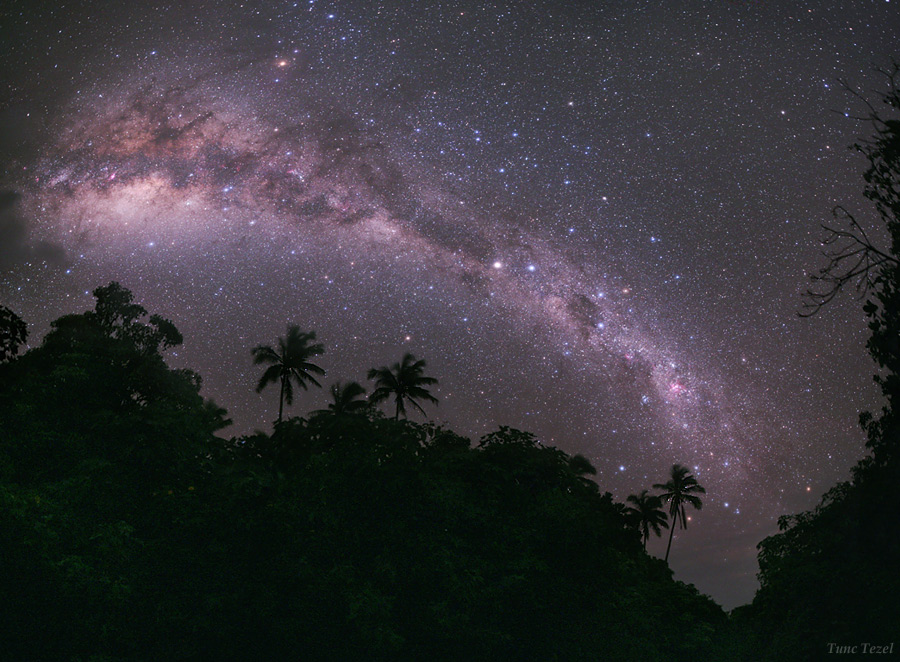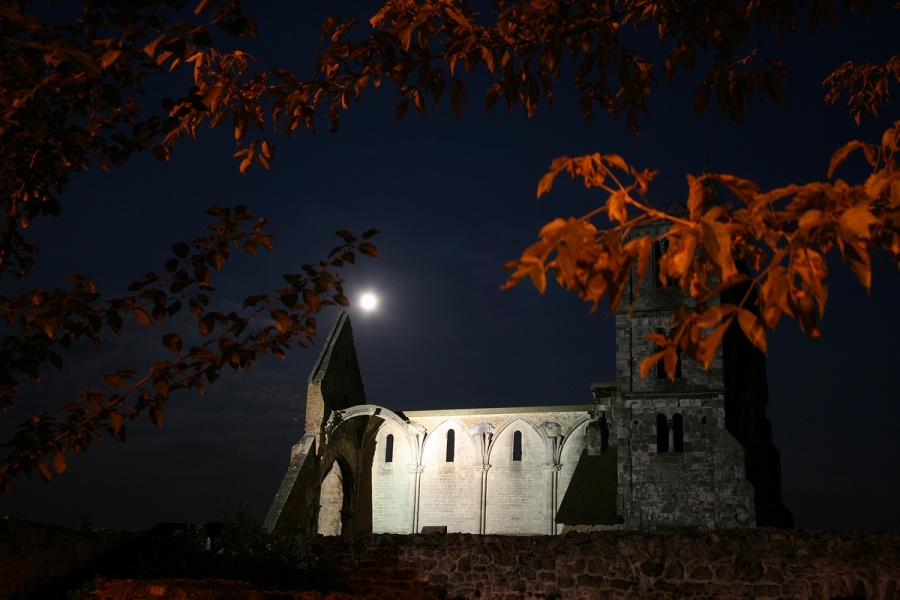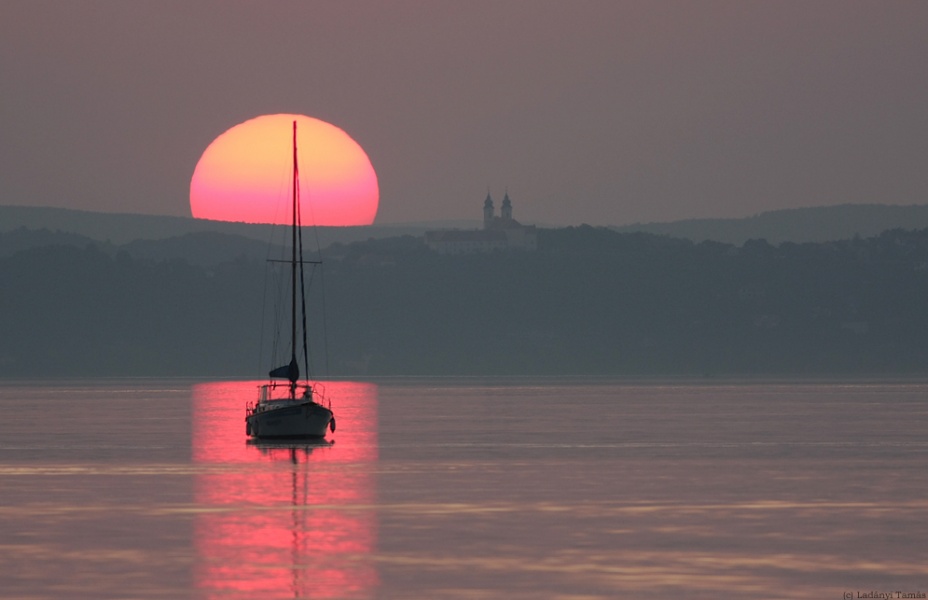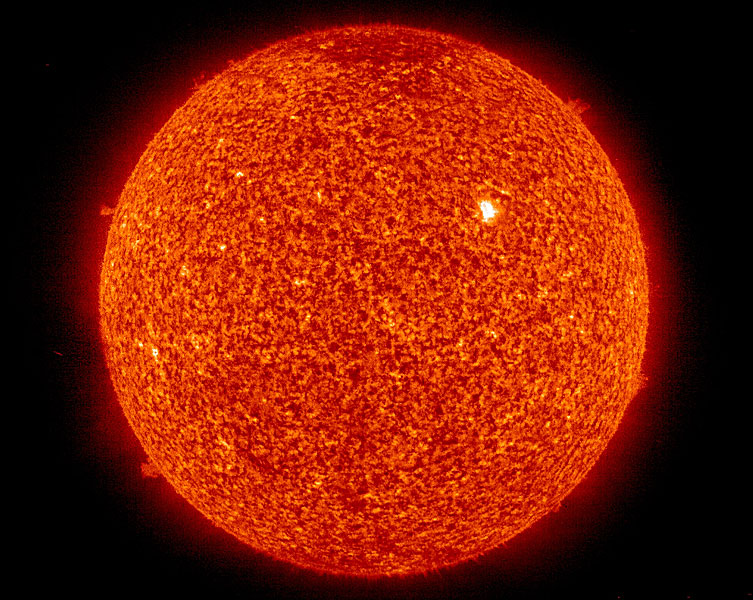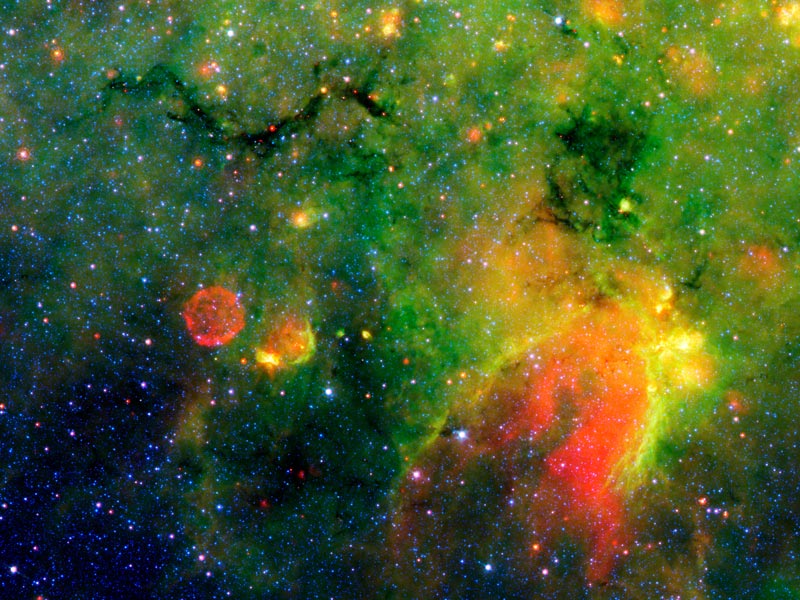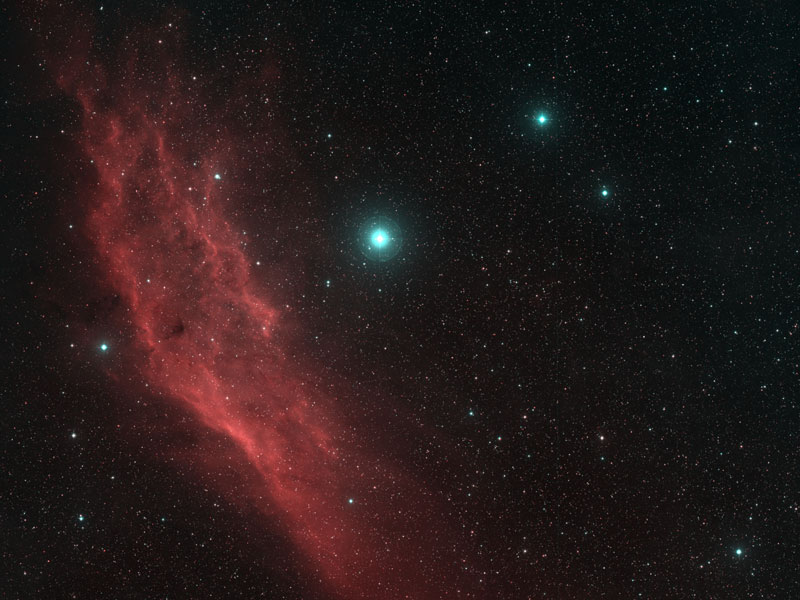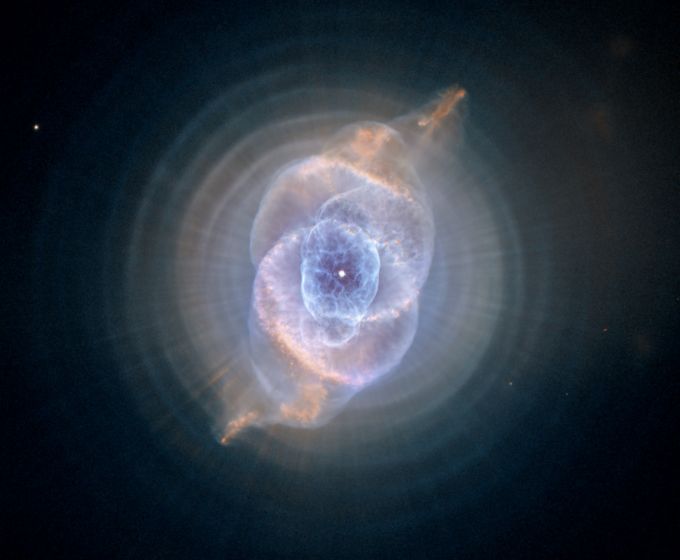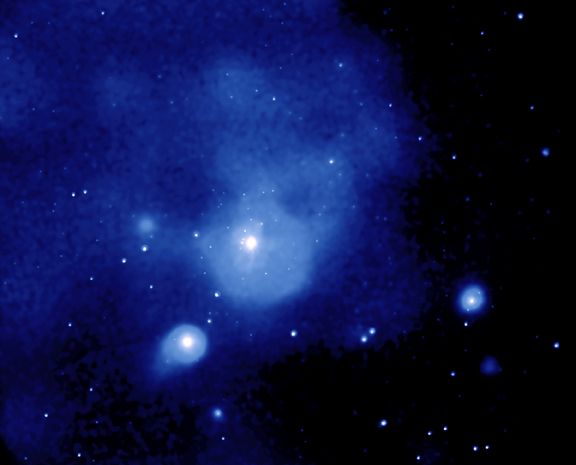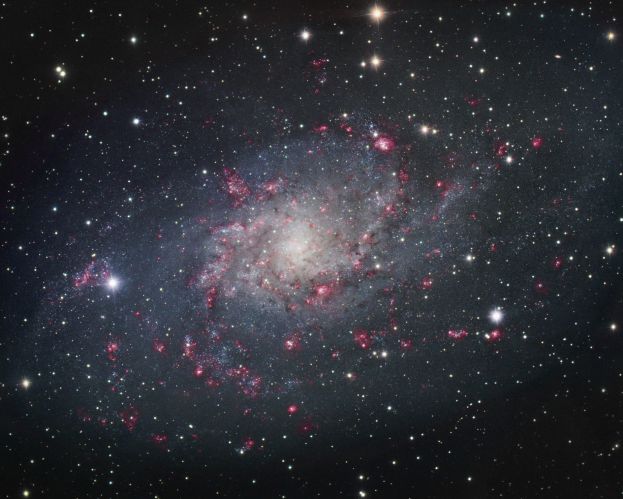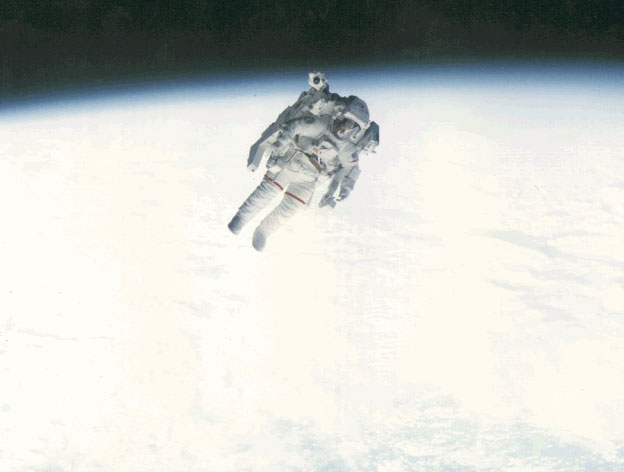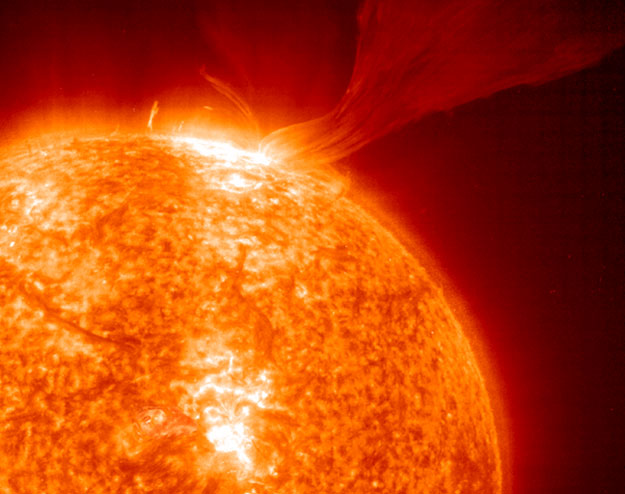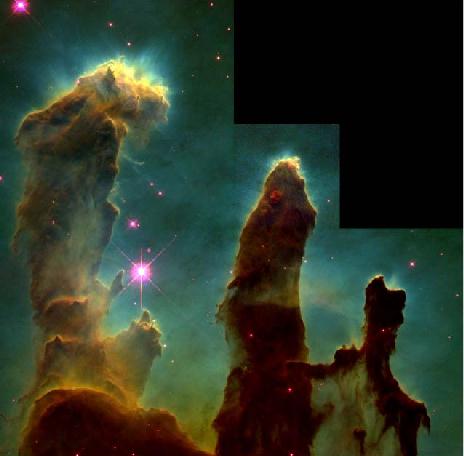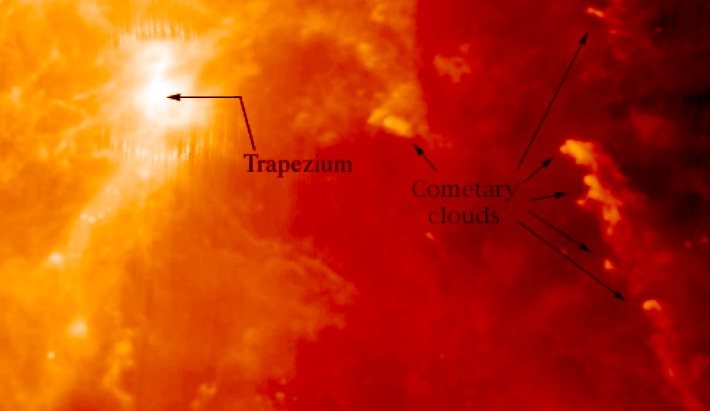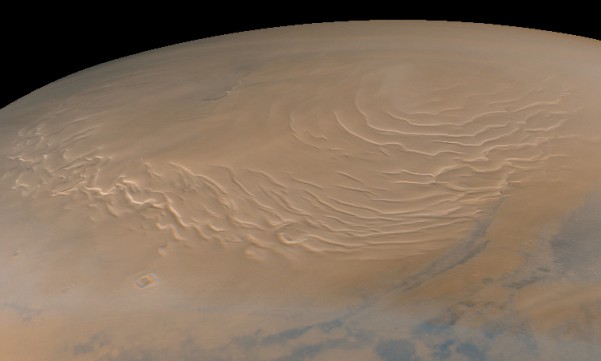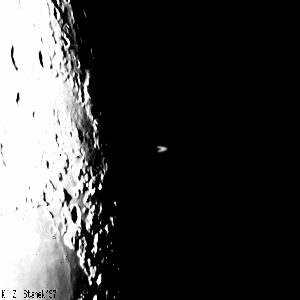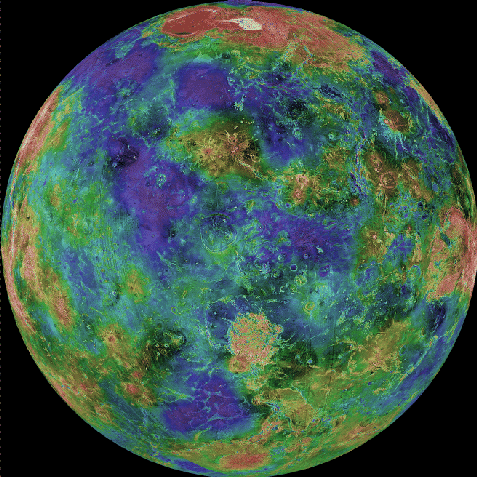| << Previous | Index | Next >> |
2015 Stars are forming in dark, dusty molecular cloud LDN 988. Seen near picture center some 2,000 light-years distant, LDN 988 and other nearby dark nebulae were cataloged by Beverly T. Lynds in 1962 using Palomar Observatory Sky Survey plates. Narrowband and near-infrared explorations of the dark nebula reveal energetic shocks and outflows light-years across associated with dozens of newborn stars. But in this sharp optical telescopic view, the irregular outlines of LDN 988 and friends look like dancing stick figures eclipsing the rich starfields of the constellation Cygnus. From dark sites the region can be identified by eye alone. It's part of the Great Rift of dark clouds along the plane of the Milky Way galaxy known as the Northern Coalsack.
2014 The large majestic Lagoon Nebula is home for many young stars and hot gas. Spanning 100 light years across while lying only about 5000 light years distant, the Lagoon Nebula is so big and bright that it can be seen without a telescope toward the constellation of Sagittarius. Many bright stars are visible from NGC 6530, an open cluster that formed in the nebula only several million years ago. The greater nebula, also known as M8 and NGC 6523, is named "Lagoon" for the band of dust seen to the left of the open cluster's center. A bright knot of gas and dust in the nebula's center is known as the Hourglass Nebula. The featured picture is a newly processed panorama of M8, capturing five times the diameter of the Moon. Star formation continues in the Lagoon Nebula as witnessed by the many globules that exist there.
2013 The stars are not alone. In the disk of our Milky Way Galaxy about 10 percent of visible matter is in the form of gas, called the interstellar medium (ISM). The ISM is not uniform, and shows patchiness even near our Sun. It can be quite difficult to detect the local ISM because it is so tenuous and emits so little light. This mostly hydrogen gas, however, absorbs some very specific colors that can be detected in the light of the nearest stars. A working map of the local ISM within 20 light-years, based on ongoing observations and recent particle detections from the Earth-orbiting Interstellar Boundary Exporer satellite (IBEX), is shown above. These observations indicate that our Sun is moving through a Local Interstellar Cloud as this cloud flows outwards from the Scorpius-Centaurus Association star forming region. Our Sun may exit the Local Cloud, also called the Local Fluff, during the next 10,000 years. Much remains unknown about the local ISM, including details of its distribution, its origin, and how it affects the Sun and the Earth. Unexpectedly, recent IBEX spacecraft measurements indicate that the direction from which neutral interstellar particles flow through our Solar System is changing.
2012 This shock wave plows through space at over 500,000 kilometers per hour. Moving toward to bottom of this beautifully detailed color composite, the thin, braided filaments are actually long ripples in a sheet of glowing gas seen almost edge on. Cataloged as NGC 2736, its narrow appearance suggests its popular name, the Pencil Nebula. About 5 light-years long and a mere 800 light-years away, the Pencil Nebula is only a small part of the Vela supernova remnant. The Vela remnant itself is around 100 light-years in diameter and is the expanding debris cloud of a star that was seen to explode about 11,000 years ago. Initially, the shock wave was moving at millions of kilometers per hour but has slowed considerably, sweeping up surrounding interstellar gas.
2011 From Sagittarius to Carina, the Milky Way Galaxy shines in this dark night sky above planet Earth's lush island paradise of Mangaia. Familiar to denizens of the southern hemisphere, the gorgeous skyscape includes the bulging galactic center at the upper left and bright stars Alpha and Beta Centauri just right of center. About 10 kilometers wide, volcanic Mangaia is the southernmost of the Cook Islands. Geologists estimate that at 18 million years old it is the oldest island in the Pacific Ocean. Of course, the Milky Way is somewhat older, with the galaxy's oldest stars estimated to be over 13 billion years old. (Editor's note: This image holds the distinction of being selected as winner in the Royal Observatory, Greenwich, Astronomy Photographer of the Year competition in the Earth and Space category.)
2010 Did you enjoy the moonlight last night? The Full Moon closest to autumnal equinox and the beginning of Fall is traditionally known as the Harvest Moon, rising opposite the Sun and illuminating fields at harvest time after sunset. This year's northern hemisphere autumnal equinox occurred yesterday, September 23rd, at 03:09 Universal Time. The Moon was at its full phase a mere 6 hours later -- exceptionally close for a Harvest Moon! Of course, the Moon still shines brightly through the night in surrounding days. In this picture from September 22nd, the lunar orb dominates the sky above a ruined church in Zsámbék, Hungary. Shining nearby, the brightest star is actually Jupiter, also opposite the Sun, seen here through thin clouds just left of the church wall.
2009 Often inspiring, or offering a moment for contemplation, a sunset is probably the most commonly photographed celestial event. But this uncommonly beautiful sunset picture was taken on a special day, the Equinox on September 22. Marking the astronomical change of seasons, on that day Earth dwellers experienced nearly 12 hours of daylight and 12 hours of darkness (an equal night). Reflected in the calm waters of Lake Balaton with a motionless sailboat in silhouette, the Sun is setting due west and heading south across the celestial equator. In the background lies the Benedictine Archabbey of Tihany, Hungary.
2008 Why has the Sun been so quiet recently? No one is sure. Our Sun has shown few active regions -- that house even fewer associated sunspots -- for over a year now, and such a period of relative calm is quite unusual. What is well known is that our Sun is in a transitional period between solar cycles called a Solar Minimum, where solar activity has historically been reduced. The stark lack of surface tumult is unusual even during a Solar Minimum, however, and activity this low has not been seen for many decades. A few days ago, however, a bona-fide active region -- complete with sunspots --appeared and continues to rotate across the Sun's face. Visible above, this region, dubbed Active Region 1002 (AR 1002), was imaged in ultraviolet light yesterday by the SOHO spacecraft, which co-orbits the Sun near the Earth. Besides the tranquility on the Sun's surface, recent data from the Ulysses spacecraft, across the Solar System, indicate that the intensity of the solar wind blowing out from the Sun is at a fifty year low. Predictions hold, however, that our Sun will show more and more active regions containing more and more sunspots and flares until Solar Maximum occurs in about four years.
2007 How do stars form? To help study this complex issue, astronomers took a deep image in infrared light of an active part of our Milky Way Galaxy where star formation is rampant. In IRDC G11.11-0.11, thick clouds of dust and gas are congealing into stars that are so dark that humans living there would see an empty night sky. The image, though, taken last year by the Spitzer Space Telescope in infrared light, shows vast glowing fields of gas and dust, indicating that much of this dust is heated by forming stars. The centers of some clouds, such as the snake-like structure on the upper left, are so thick and cold that they are dark even in infrared light. Many of the red dots are glowing dust shrouds centered on very young newly formed stars. The unusual red sphere below the snake is actually a supernova remnant, the glowing shell of a young star so massive it evolved rapidly and exploded. The region spans about 150 light years and lies about 10,000 light years away toward the constellation of Sagittarius.
2006 What's California doing in space? Drifting through the Orion Arm of the spiral Milky Way Galaxy, this cosmic cloud by chance echoes the outline of California on the west coast of the United States. Our own Sun also lies within the Milky Way's Orion Arm, only about 1,500 light-years from the California Nebula. Also known as NGC 1499, the classic emission nebula is around 100 light-years long. It glows with the red light characteristic of hydrogen atoms recombining with long lost electrons, stripped away (ionized) by energetic starlight. In this case, the star most likely providing the energetic starlight is the bright, hot, bluish Xi Persei, just right of the nebula and above picture center. Fittingly, this composite picture was made with images from a telescope in California - the 48-inch (1.2-meter) Samuel Oschin Telescope - taken as a part of the second National Geographic Palomar Observatory Sky Survey.
2005 Staring across interstellar space, the alluring Cat's Eye nebula lies three thousand light-years from Earth. A classic planetary nebula, the Cat's Eye (NGC 6543) represents a final, brief yet glorious phase in the life of a sun-like star. This nebula's dying central star may have produced the simple, outer pattern of dusty concentric shells by shrugging off outer layers in a series of regular convulsions. But the formation of the beautiful, more complex inner structures is not well understood. Seen so clearly in this sharp Hubble Space Telescope image, the truly cosmic eye is over half a light-year across. Of course, gazing into the Cat's Eye, astronomers may well be seeing the fate of our sun, destined to enter its own planetary nebula phase of evolution ... in about 5 billion years.
2004 Reminiscent of popular images of the lovely Pleiades star cluster that lies within our own Milky Way Galaxy, this false-color x-ray view actually explores the center of a much more extended cosmic family -- the Fornax cluster of galaxies some 65 million light-years away. Spanning nearly 900,000 light-years, the Chandra Observatory composite image reveals high-energy emission from several giant galaxies near the Fornax cluster center and an immense, diffuse cloud of x-ray emitting hot gas. On the whole, the hot cluster gas seems to be trailing toward the upper left in this view. As a result, astronomers surmise that the Fornax cluster core is moving toward the lower right, encountering an intergalactic headwind as it sweeps through a larger, less dense cloud of material. In fact, along with another visible galaxy grouping at the outskirts of the cluster, the Fornax cluster core galaxies seem to be moving toward a common point, attracted by the dominating gravity of unseen structures of dark matter in the region.
2003 The small constellation Triangulum in the northern sky harbors this magnificent face-on spiral galaxy, M33. Its popular names include the Pinwheel Galaxy or just the Triangulum Galaxy. M33's diameter spans over 50,000 light-years, making it third largest in the Local Group of galaxies after the Andromeda Galaxy (M31), and our own Milky Way. About 3 million light-years from the Milky Way, M33 lies very close to the Andromeda Galaxy and observers in these two galaxies would likely have spectacular views of each other's grand spiral star systems. As for the view from planet Earth, this sharp 27 frame mosaic of M33 nicely shows off blue star clusters and pinkish star forming regions which trace the galaxy's loosely wound spiral arms. In fact, the cavernous NGC 604 is the brightest star forming region seen here, visible along an arm arcing above and to the right of the galaxy center. Like M31, M33's population of well-measured variable stars have helped make this nearby spiral a cosmic yardstick for establishing the distance scale of the Universe.
2002 What would it be like to fly free over the seas and clouds of Earth? The first to experience such an "untethered space walk" were NASA astronauts Bruce McCandless and Robert Stewart during Space Shuttle mission 41-B in 1984. McCandless, pictured above, used a Manned Maneuvering Unit (MMU) to move in and around the cargo bay of the space shuttle. The MMU works by shooting jets of nitrogen and has since been used to help deploy and retrieve satellites. With a mass over 140 kilograms, an MMU is heavy on Earth, but, like everything, is weightless in space. The MMU was replaced in 2001 with the SAFER backpack propulsion unit.
2001 Our Sun is still very active. Last year, our Sun went though Solar Maximum, the time in its 11-year cycle where the most sunspots and explosive activities occur. Sunspots, the Solar Cycle, and solar prominences are all caused by the Sun's changing magnetic field. Pictured above is a solar prominence that erupted on May 15, throwing electrons and ions out into the Solar System. The image was taken in the ultraviolet light emitted by a specific type of ionized helium, a common element on the Sun. Particularly hot areas appear in white, while relatively cool areas appear in red. Our Sun should gradually quiet down until Solar Minimum occurs in 2007.
2000 Newborn stars are forming in the Eagle Nebula. This image, taken with the Hubble Space Telescope in 1995, shows evaporating gaseous globules (EGGs) emerging from pillars of molecular hydrogen gas and dust. The giant pillars are light years in length and are so dense that interior gas contracts gravitationally to form stars. At each pillars' end, the intense radiation of bright young stars causes low density material to boil away, leaving stellar nurseries of dense EGGs exposed. The Eagle Nebula, associated with the open star cluster M16, lies about 7000 light years away.
1999 Intense ultraviolet light from massive, hot stars in the Orion region has sculpted and compressed clouds of dust and gas in to distinctively shaped Cometary Globules. Seen in this IRAS infrared image recorded at a wavelength sensitive to emission from dust, the elongated globules are easily visible along with a bright region which corresponds to the Trapezium star cluster. Otherwise known as the Witch Head Nebula, IC 2118 is the string of globules near the middle right. Suggestively similar to comets in general appearance only, Cometary Globules are interstellar condensations on a vastly different scale. These are likely related to star formation episodes in the Orion molecular cloud. Besides those indicated by the arrows, more comet-shaped clouds or globules are present in this image.
1998 The North Pole of Mars is capped by layers likely consisting of ice and dust deposited over millions of years. Imaged on September 12 - early Spring for Northern Mars - by the Mars Global Surveyor's camera, this synthesized wide-angle color view shows the rippled, eroded polar terrain covered with pinkish seasonal carbon dioxide frost. Dark areas bordering the polar cap are fields of sand dunes. This is the last picture scheduled to be taken by Surveyor's camera until it resumes operation in late March 1999. Over the past year of operation, the camera has taken about 2,000 pictures of Mars. Meanwhile, the spacecraft will begin its second round of aerobraking to achieve a circularized martian mapping orbit.
1997 Many stargazers in the U. S. were able to watch a lovely lunar occultation early last Thursday morning as a bright Moon passed in front of Saturn. Using a 1.2 meter reflector, astronomer Kris Stanek had an excellent view of this dream-like event from the Whipple Observatory atop Arizona's Mount Hopkins. This animated gif image was constructed by Wes Colley from 4 frames taken by Stanek at 35 second intervals as the ringed planet emerged from behind the Moon's dark limb. While lunar occultations of fairly bright stars and planets are not extremely rare events, their exact timing depends critically on the observer's location.
1996 If the thick clouds covering Venus were removed, how would the surface appear? Using an imaging radar technique, the Magellan spacecraft was able to lift the veil from the Face of Venus and produce this spectacular high resolution imageof the planet's surface. Red, in this false-color map, represent mountains, while blue represents valleys This 3-kilometer resolution map is a composite of Magellan images compiled between 1990 and 1994. Gaps were filled in by the Earth-based Arecibo Radio Telescope. The large yellow/red area in the north is Ishtar Terra featuring Maxwell Montes, the largest mountain on Venus. The large highland regions are analogous to continents on Earth. Scientists are particularly interested in exploring the geology of Venus because of its similarity to Earth.
1995 Mimas is one of the smaller moons of Saturn but shows one of the largest impact craters! In fact, if the impact had been much greater, it would have disrupted the entire satellite. The large crater has been named Herschel after the 1789 discoverer of Mimas, Sir William Herschel. Mimas' low mass produces a surface gravity just strong enough to create a spherical body but weak enough to allow such relatively large surface features. Mimas is made of mostly water ice with a smattering of rock - so it is accurately described as a big dirty snowball. Voyager 1 flew by in 1980 and took the above picture.
| << Previous | Index | Next >> |
